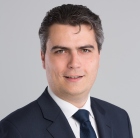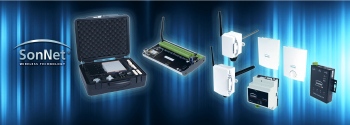The impact of the Internet of things

The Internet of Things (IoT) is having a big impact on the world of building controls. Sandy Damm of Sontay, looks at the how this will affect the future of the industry and how sensors will have to be smarter to deal with the increasing demands for more data.
The capabilities of smart devices are increasing all the time and is due to the advancing Internet connectivity of such products. By providing useful data from the building-management system (BMS) to energy and facilities managers over the web to remote PCs, tablets and smartphones, these devices can be used to collate big data. This in turn can be stored in the ‘cloud’ and made readily available for collation and analysis to improve energy management, facilitate better maintenance and repair regimes, and help end-users improve how they utilise their buildings.
Increased device-to-device communication is an important role within modern building-management systems. Convergence is the hot topic at the moment, and we are seeing many devices and control systems using Internet Protocol (IP) alongside traditional protocols for communication, such as BACnet and Modbus. Wireless variations of intelligent control devices are becoming much more readily available. This makes it easier to build, extend and increase the range and capabilities of a unified, integrated system.
 |
| Wireless sensors are well suited to older buildings such s the Guildhall Art Gallery in London, where a SonNet system has been installed. |
Having said that, it is not just about devices working together, the Internet of things is also about the data that can be accessed. Here, sensors play the vital role. They are inherently smart — measuring, analysing and evaluating all sorts of building performance data and making this information available to the control system. By pulling together this information and using it to determine the actions of connected devices, we can create a truly ‘smart’ system. Cloud-based applications are key to using this data. The Internet of things does not function without the right collection and analytical tools to interpret and use information intelligently.
Today, the choice available in sensors embraces different levels and can now range from a simple thermistor-based room-temperature device to a sophisticated smart-protocol communication sensor.
The latest multi-sensing products offer an increased level of functionality, tailored to suit any application. They provide complete environmental sensing within a single unit, with a whole range of variables being measured — including temperature, CO2, relative humidity, light level, air quality and fan speed.
Popularity is growing for these multi-sensing devices, as they are quicker, simpler and more cost effective to install and utilise just one cable to send all data, no matter how many variables are detected.
Wireless technology is also making headway in the development of intelligent sensor products. For example, we recently introduced an RF-IOM-4A-4U input module that works in conjunction with SonNet sensors and routers.
This device acts as a local I/O, with connectivity to typical HVAC equipment such as fan-coil units or variable-air-volume boxes. The module can take any 0 to10 V DC, 4 to 20 mA, resistive or VFC signal from wired devices in the field and transmit them to a SonNet RF-RXS receiver.
This receiver can, in turn, be read by a Tridium JACE controller through the open-platform Niagara framework. The strategy within the controller uses this information to calculate control values, which are then passed back through the I/O module to alter damper positions and other output connections in the field. SonNet can also communicate through BACnet and Trend systems using the SonNet powered by SIP interface.
Reliability is an important factor to ensure that devices can communicate the data they collect as efficiently as possible. This is a key consideration for integrators when they are choosing a wireless system. No end user wants a system that drops in and out and cannot be relied upon to provide accurate and continuous measurements.
For example, our SonNet wireless system comprises battery-powered sensor nodes and permanently powered network receivers and routers with associated software. This product range is built on a robust 2.4 GHz, 802.15.4 self-healing, wireless tree topology.
 |
| Within the modern building, we are looking for sensors that are intelligent, open and always online |
This topology is significant because it eliminates concerns with reception and reliability often associated with existing point-to-point wireless systems. If a sensor detects a problem with the signal, it will automatically re-route to find the strongest available path to the receiver. Interference with other radio devices in the same frequency spectrum has also been addressed through a proprietary algorithm which continually adapts to site conditions.
Within the modern building, we are looking for sensors that are intelligent, open and always online.
The data they collect and communicate in our increasingly converged and integrated building controls world will become ever more important as they fulfil their demanding role.
This in turn will help us to manage buildings better and drive energy-efficient improvements. They will be a major asset to end users and ensure that the business-critical information needed is quickly and easily available to all who need it.
Sandy Damm is managing director of Sontay.








